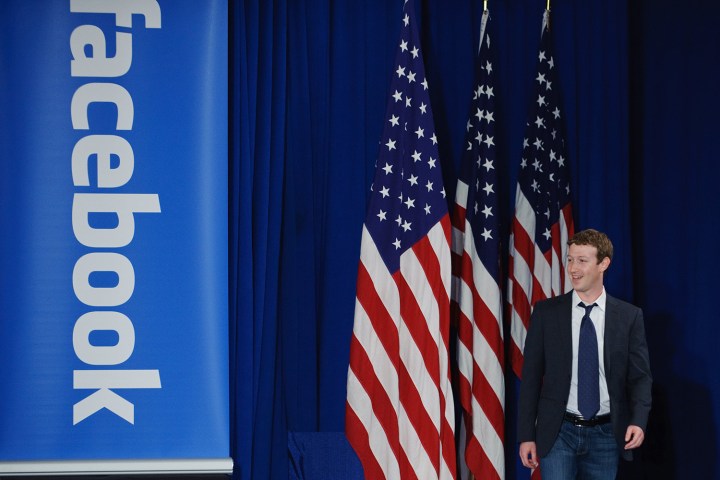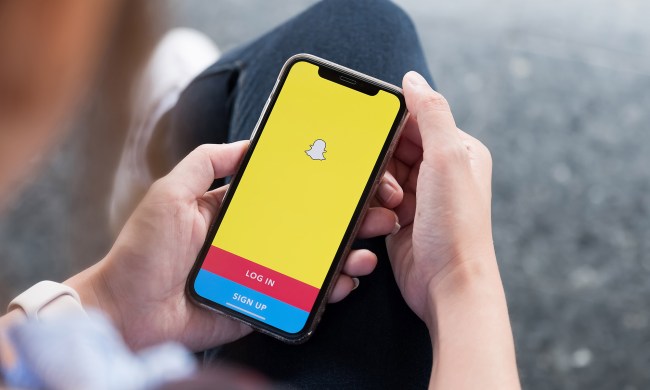In the wake of fake news and Russian-bought ads that proliferated the 2016 U.S. presidential election, people have started taking a more critical look at the role of social media in society. As social media companies launch new policies in the aftermath, several questions still remain, and among them, a wide-reaching topic for debate: How does social media influence a democratic society?
When someone is exposed to only information that supports their own beliefs, those beliefs tend to push more towards the extremes.
The question is one that Facebook has asked itself, reaching out to three different outside experts from three different continents. Many agree on several positives that social media brings to the table, including affordable access to information, voicing voter concerns, and adding another communication channel between voters and politicians. But social media has just as many pitfalls — some that are already being addressed, others that both social media companies and governments continue to examine. For users of social platforms, it is becoming increasingly important to be aware of these pitfalls.
The Information Cocoon
Algorithmic news feeds are designed to bring you information that you’re more likely to tap the “like” button on. The basic idea was simply to understand what type of content you liked and show you more of it, which sounds innocent enough. The problem, as Harvard Law School Professor Cass R. Sunstein says, is that those same algorithms create what’s called polarization, or an information cocoon. Polarization refers to the idea that, when someone is exposed to only information that supports their own beliefs, those beliefs tend to push more towards the extremes.
Sunstein points to an experiment he conducted before the explosion of social media where those in the experiment were intentionally placed in a group where every member supported the same beliefs. Conservatives were matched with other conservatives, liberals with other liberals, and both groups were asked to debate the same three topics. Afterwards, each member had a more extreme view on the subject than before entering the discussion. Those in the liberal group, for example, had already favored an international treaty to control climate change before the study, but emerged more strongly in favor of it afterwards; conservatives were initially neutral on the treaty, but came away feeling adamantly opposed.
This, the Harvard professor explains, shows how engaging only with likeminded people and information can actually widen the gap between different groups, more so than having no information at all. He argues that Facebook and other social networks shouldn’t be developing a more personalized feed, but rather should seek to diversify the information you see, even going so far as to select things you likely would not have selected for yourself. Facebook’s Related Articles is one step in that direction, but more should be done to prevent social media from becoming an information cocoon, he says.
Fake news
Before the internet, disinformation campaigns saw limited spread because news was shared inside publications spearheaded by editors looking to avoid lawsuits and maintain a reputation. Toomas Hendrik Ilves, the former president of Estonia and now a fellow at Stanford University Hoover Institution, suggests social media creates a news outlet without oversight, allowing anyone to create and share fake news and misinformation.
Ilves says while some studies have shown how wide-spread fake news links are, studies have not yet shown if the disinformation campaigns had an influence on voters. One study suggests that the fake news shared before the 2016 election had more views than the stories by major news outlets, while another showed that nearly 30 percent of Americans that were 18 or older visited a fake news site in that same time period, he said.
Ilves says that the pressure to legislate fake news campaigns will likely increase, with Germany now requiring social media platforms to remove hate speech, fake news, and other illegal content within 24 hours. He suggests that, however, regulation by the social media platforms themselves could reduce some of the pressure for government action.
Bots
One of the tools being used to spread fake news is the use of bots, or automated accounts creating or sharing a large number of posts. Bots on Twitter, Ilves says, have been used to suggest current events are hoaxes or to undermining politicians.
“The Twittersphere especially has been deluged by bots — or robot accounts tweeting and retweeting stories — that generally are fake.”
“The Twittersphere especially has been deluged by bots — or robot accounts tweeting and retweeting stories — that generally are fake and often in the service of governments or extremist political groups tying to sway public opinion,” Ilves wrote. “NATO’s Center of Excellence for Strategic Communication, for example, recently reported that an astounding 84% of Russian-language Twitter messages about NATO’s presence in Eastern Europe were generated by bots. The assumption, of course, is that the more something is seen, the more likely it will be believed.”
Since then, Twitter has launched changes to their API and even their own Tweeting tool in order to restrict mass-written tweets to reduce bot use on the platform.
Dark ads
During the last US and UK elections, Ilves points out that posts could be unpublished, or not viewable on a page, and yet boosted to a targeted set of demographics. Ilves calls the practice dark advertising and says that it doesn’t allow voters to criticize political ads on social media like those on TV or in print.
Both Facebook and Twitter have already launched transparency measures in response to the practice, including making the targeted demographics of a political ad publicly available information. The networks could continue making changes in that direction — a few months after launching the transparency initiative, Facebook said they will start requiring a code sent by mail for political ads to help verify that the advertiser is located inside the country.
User Data
As the debate on how social media influences democracy continues, users are pressing for more privacy and control over how the data on the network is used. A recent survey suggests that nearly 80 percent of Australians want to know exactly how social media companies are using the data they put online.
“Inherently, however, I believe social media is a net ‘good’ for civic engagement”
Ariadne Vromen, a sociology professor at the University of Sydney, suggests that both governments and social media platforms themselves cannot regulate online privacy and suggests instead the task should be left up to civil organizations. “They both have self-serving interests in collecting data to either monetize or use for partisan or security reasons,” she wrote. “The boundaries on this must be set by stronger civil society organizations that represent ordinary citizens.”
Social media brings both positives and negatives to a democracy, to the accessibility of information to the spread of misinformation — but the number of changes from advertising revisions to algorithms designed to detect fake news suggests the issue isn’t one that the networks are ignoring. “Inherently, however, I believe social media is a net ‘good’ for civic engagement,” Vromen concluded. “Whether that remains so rests in part with Facebook, Twitter, and all the companies that operate these platforms, and their willingness to play a more active and transparent role in working with civil society organizations to protect the networks they created.”




